Even though mulberries can be small and messy, they're still sought after for their wonderful taste. Only a few know that two popular species are present in the Northern part of America: the white mulberry and red mulberry. After much research about this tree, we have finally determined when they fruit.
In most cases, everbearing mulberry plants need at least three years to produce berries. But you can find everbearing mulberries, which start producing fruit the first year, at particular gardens. You can gather fruits from the trees between June and September.
Aside from knowing when the mulberry trees fruit, it would also be best to know how to harvest the berries and adequately take care of them. And to do that, we encourage you to read the entire post. Doing so will also help you learn how to prune, overwinter, pot, repot the mulberry plant, and many more. So, without further ado, let's delve into the details!
How Do You Harvest Mulberry Fruits?
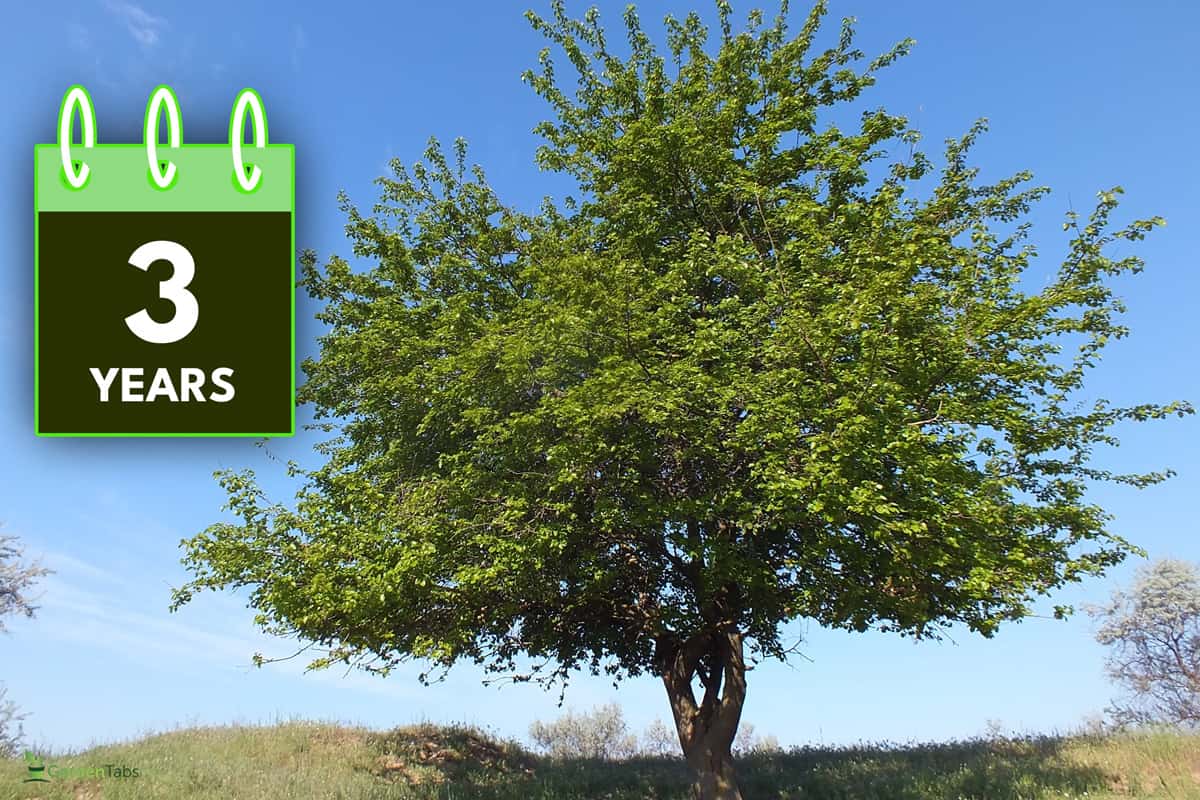
As mentioned, a mulberry tree will start to yield fruits after three years. The berries will be at their full readiness sometime between June and September, but this does not mean they will all be available at the exact moment.
One key point when harvesting is that the darker the fruit, the sweeter it usually tastes. And you are undoubtedly aware that mulberries are pretty fragile, which makes them easy to crush. So, it would be best to be extra cautious when harvesting them.
Moreover, sticky fruit on the grass attracts pests and animals and can harm your home if you don't pick it up right away.
There are two ways of harvesting mulberry fruits, and they are:
1. Handpicking
Hand plucking is the most popular way of harvesting mulberry fruits. However, it can be a very lengthy process.
2. Shaking
Shaking is another approach. All you need to do is place an old blanket or tarp under the tree and start shaking the tree until you see the berries drop from it.
How To Induce Mulberry Flowering?
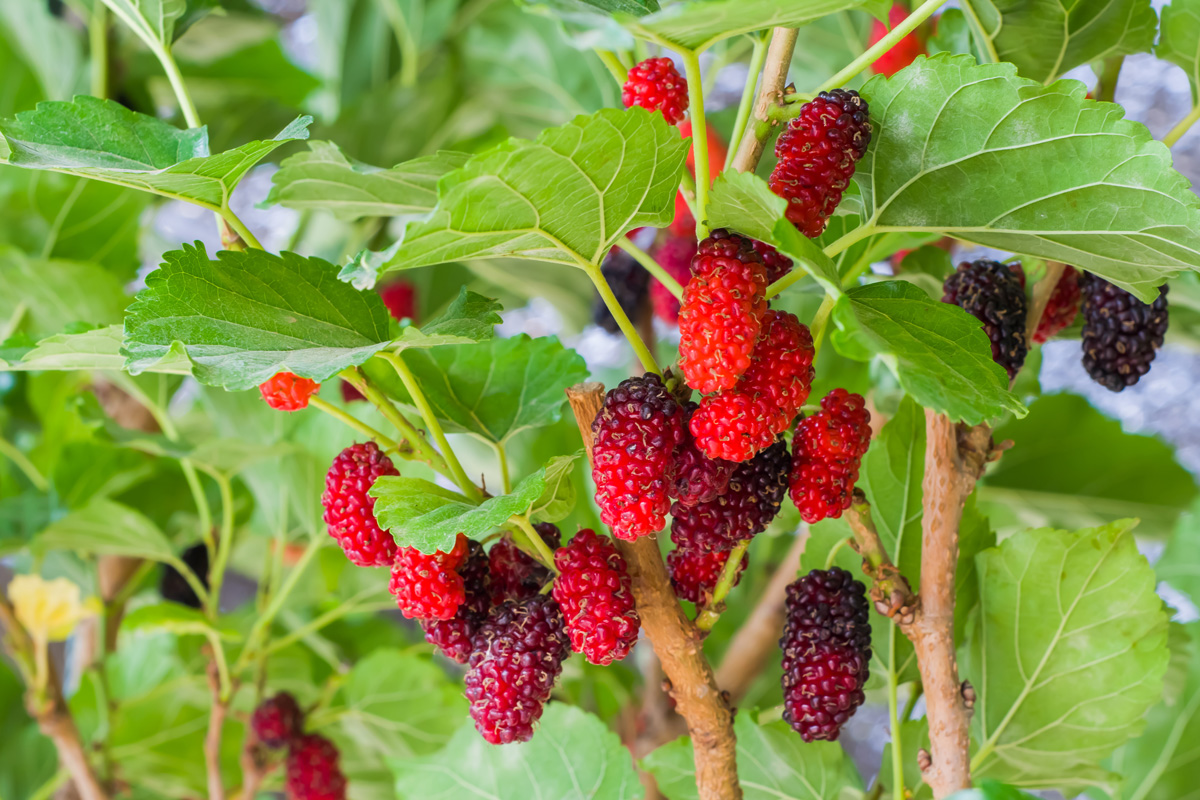
Mulberry trees aren't typically encouraged to blossom because their unattractive flowers result in untidy berries, which aren't particularly useful unless you plan to turn them into jams, jellies, or other sweets. But if you would like the mulberry to flower and bear fruit, all you have to do is give it what it requires: lots of sun exposure, frequent watering, and yearly fertilizer.
If your mulberry tree is not blossoming or producing fruit, it's either due to poor soil quality or a late spring frost that killed the new shoots.
What Are The Pests And Diseases That Affect Mulberry Trees?
Scale, whitefly, and mealybugs are just a few of the pests that could affect mulberry trees. Notably, older trees are resistant to these pests, which is helpful because maintaining a tall tree of 50 feet is no simple task. You can utilize a horticultural oil, like neem oil, to treat a seedling that shows evidence of infection.
Although microbial blights and fungal leaf spot infections can occasionally affect these trees, generally speaking, they are disease-free. And you should immediately cut out infected sections of a plant as soon as you spot them. In most cases, no medication is necessary for a fungal infection.
How To Properly Care For Mulberries?
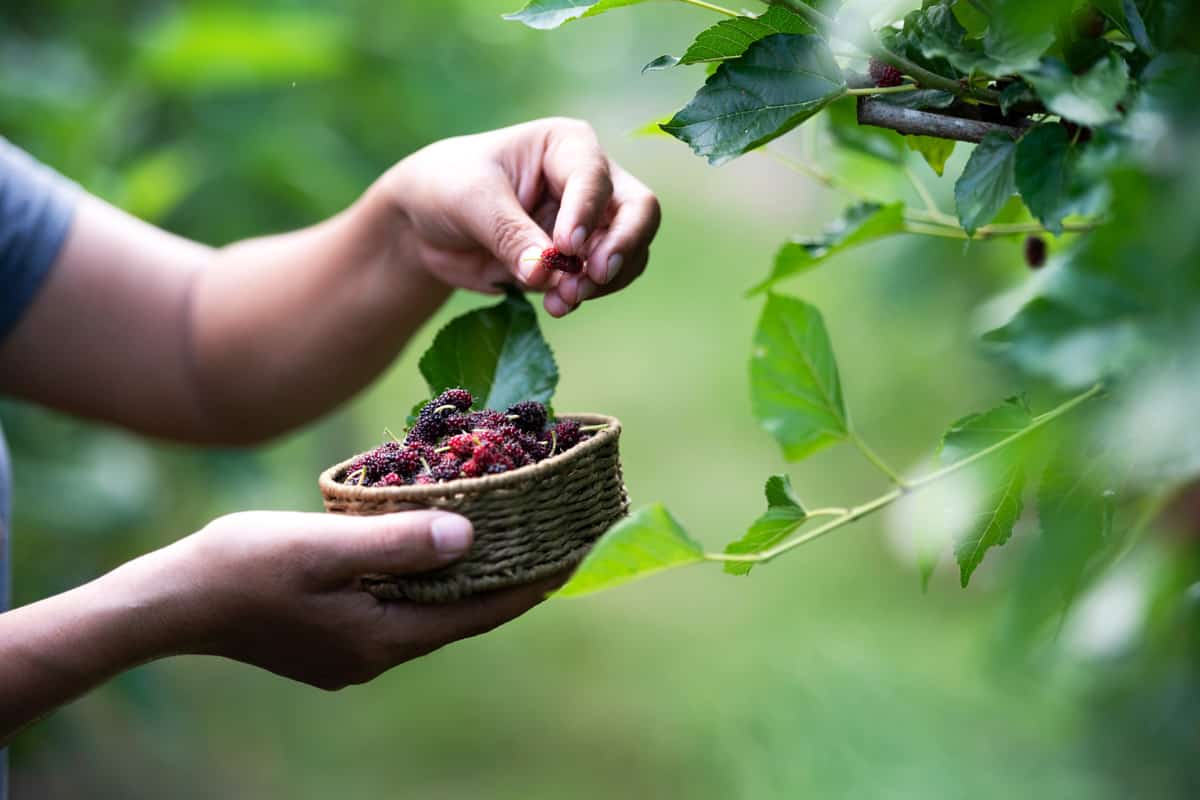
Mulberry trees are not difficult to handle and grow. In fact, you can quickly propagate them. However, you must know that they are inappropriate for all garden types.
There are gardeners who want to have the seedless species. On the other hand, some want one that is highly resistant to drought.
You must be aware that mulberry trees are just one of those plants that contain fast-developing roots. So, it is advisable to plant one not too close to any plant or structures, which includes the driveway, sewage lines, garage, utility, etc.
Below are the procedures you must carefully follow to properly care for and maintain mulberry trees.
Use The Appropriate Soil
One good thing about mulberry trees is that they are highly adaptable and versatile when it comes to the soil you will use to plant them in. They can tolerate loam, sandy, or even clay soil with no difficulty. However, you must ensure that the earth can allow adequate drainage.
You should watch out for the pH of the soil you are using. It is because mulberry trees prefer only neutral to slightly acidic soil.
Provide With The Required Fertilizer
Most mulberry trees can get by just fine without any fertilizer. However, an annual treatment isn't necessarily a bad idea. Apply a balanced 10-10-10 mixture to your tree's soil once during the late winter, calculating one pound of the mix for every inch of the mulberry trunk diameter.
Provide Adequate Light
Partial shade to full sun is what mulberry trees need to thrive. However, you are surely aware that fruit trees grow and produce fruit optimally when you allow them to receive more direct sunlight.
Observe Temperature And Humidity
A mulberry tree will give the most fruit in a climate where the average summer temperature is between 68 and 86 degrees Fahrenheit. In the winter, dormant mulberry trees can tolerate coldness of around -25 degrees Fahrenheit.
Give An Adequate Amount Of Water
Your mulberry tree will produce a robust root system when it receives enough water. Once you finish planting your mulberry plant, it would be best to provide it with deep watering regularly. To be more specific, you should give it up to three gallons of water weekly.
And after you have noticed that the mulberry tree has already established itself, know that it can tolerate drought. However, extended drought and no watering can deplete the production of fruits. It will also make the unripe fruits drop early.
How To Propagate Mulberry Trees Using Cuttings?
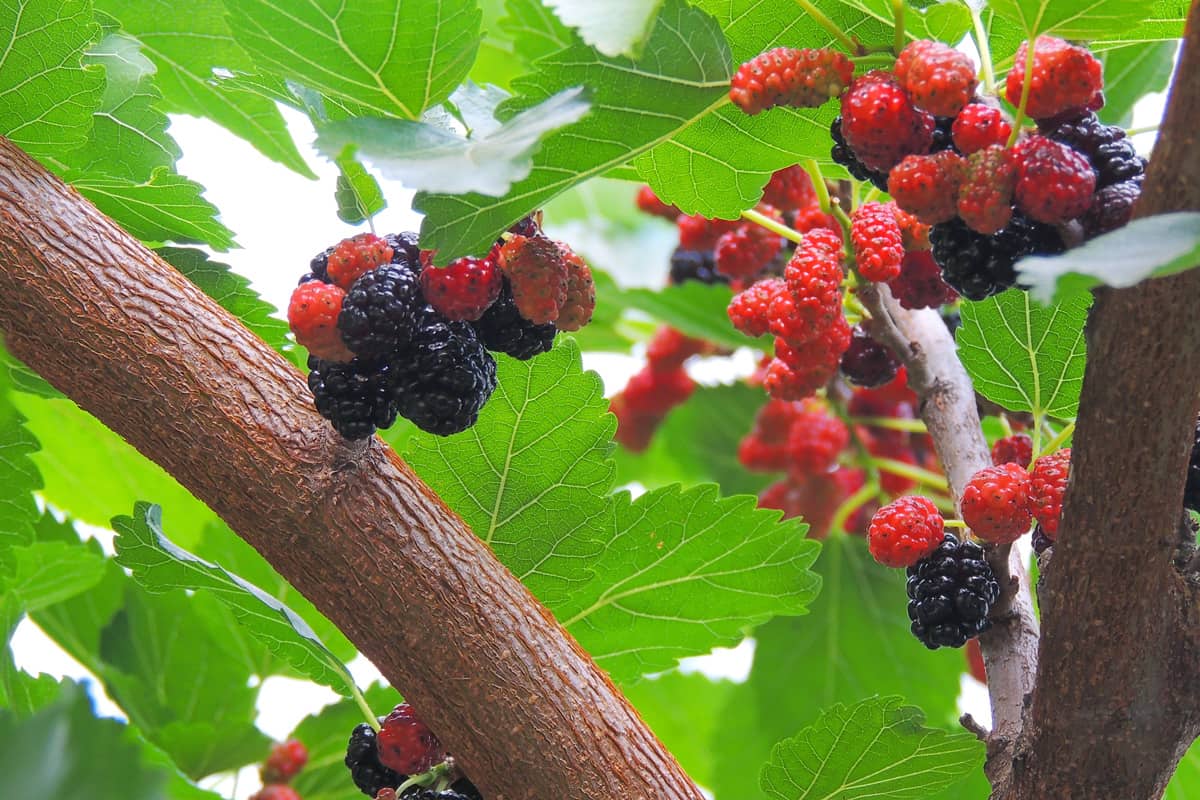
Propagating mulberries is a relatively easy task! And you can do it by doing the following procedures:
1. Take A Cutting
When new shoots are just beginning in the springtime, use sharp and sterile pruners to remove six to eight inches length sections from the ends of stems with a half-inch or less width. These stems should be reasonably fresh but not fully tender and verdant.
Check out this set of pruning shears on Amazon.
2. Prepare A Rooting Hormone
In this step, you will need to dip the cutting in a rooting hormone.
Place the clipped tips in commercial potting soil in tiny containers after dipping the bottoms in rooting hormone.
Check out this rooting hormone on Amazon.
3. Provide An Adequate Amount Of Water
After giving the containers a good soaking, seal them up in gallon-sized transparent plastic bags using elastic bands.
4. Place The Container In Complete Shade
Keep the containers damp by monitoring them occasionally and placing them in a cool, dark area until the plants produce roots.
5. Remove The Clear Plastic Bag
After 30 days, the mulberry cuttings should have established roots, at which point you can remove them from the transparent plastic bags and allow them to keep growing in the containers until the following fall, when you can transfer them to the garden.
Since not all of your cuttings will root, it would be best to take up to five cuttings to make the rooting chances bigger.
How To Grow Mulberry Trees Using Seeds?
The prolific sowing that mulberry trees are capable of demonstrates how simple it is to cultivate them from seeds. You can wait for volunteers to sprout and cautiously move them to other areas or you can harvest the fruits and dry them to save the seeds for later use.
How To Prune A Mulberry Tree?
The mulberry tree does not require annual trimming, but any weak or crossed branches are better to remove during the tree's idle period in the late fall or winter. Doing so will aid the tree from losing its sap.
How To Overwinter Mulberry Trees?
Young mulberries may not survive grazing animals, such as deer and rabbits, that chew on the bark. For protection, cover the branches with metal barriers or hardware fabric during the first few years. After around three years, the trees have matured sufficiently to withstand harm from animals.
Mulberry trees are prone to excessive self-seeding. However, you can mitigate this problem by regularly removing the berries that have dropped from the tree in the fall. As long as you cultivate them in an environment within their recommended hardiness zone, these trees may last the winter without any special care.
How To Pot And Repot Mulberry Plants?
Mulberry trees rarely grow in containers, given their rapid growth and potential to outgrow most pots. It is feasible to plant mulberry in a big pot for a bright balcony or patio. Still, the untidy fruit can be an inconvenience in these areas unless you are ready to trim periodically and are willing to give up the mulberry when it starts to become huge after a few years.
Plant in the broadest, most bottomless pot possible using commercial potting soil that you have heavily treated with compost. Instead of repotting the mulberry as it matures, it is more economical to start with an enormous container from the beginning.
Wrapping It All Up
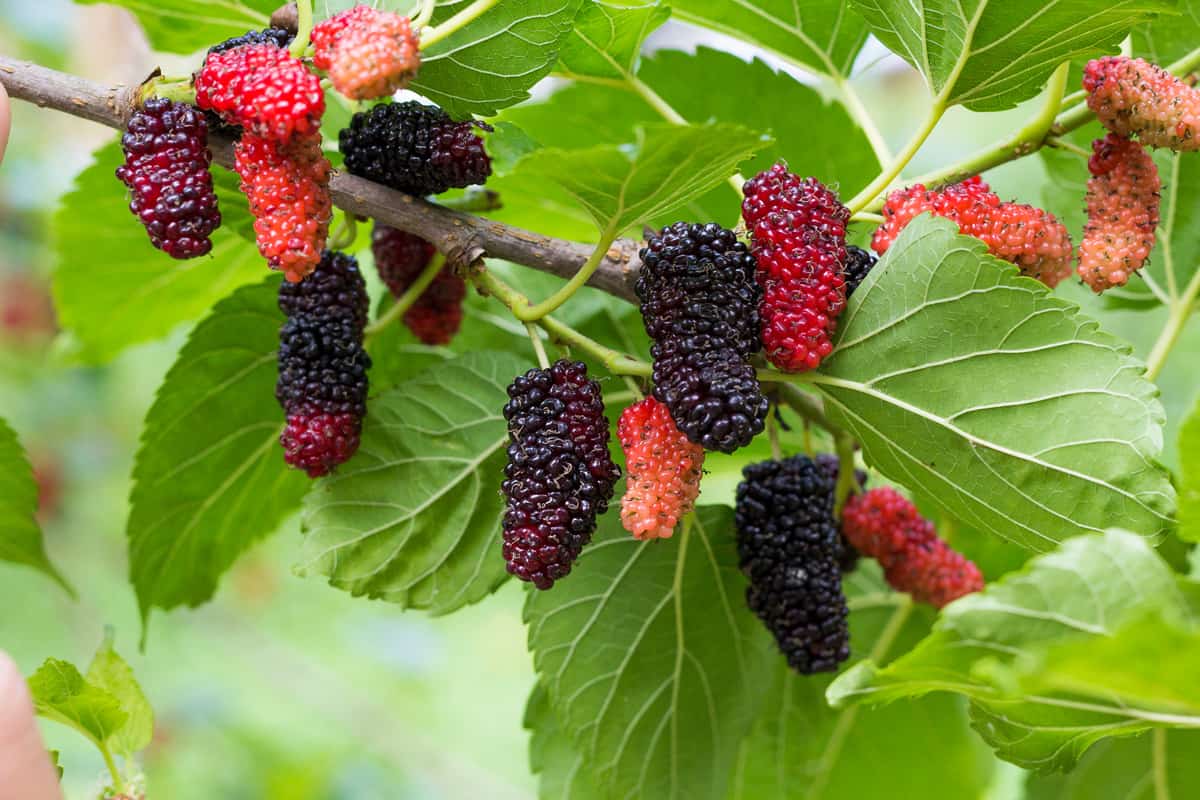
Knowing the seasons of blooming and producing the fruit of a mulberry tree is essential, especially if you wish to use berries to make jams and jellies. Moreover, it would be best to follow the proper caring mentioned in this post to allow the mulberry tree to grow at its best. However, you must bear the consequences of its messy fruit.
You have finally reached the end of this post. We hope you find this helpful. Please know that you can reach out in the comments for further questions. And if you wish to continue reading, you can check these related posts out!


